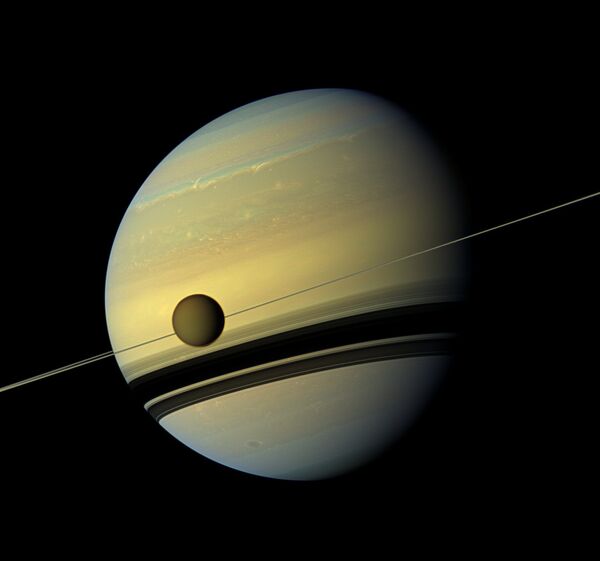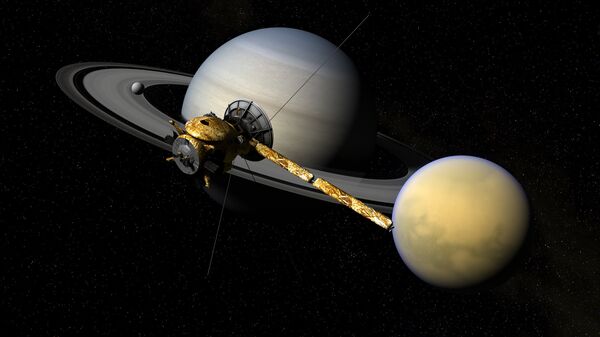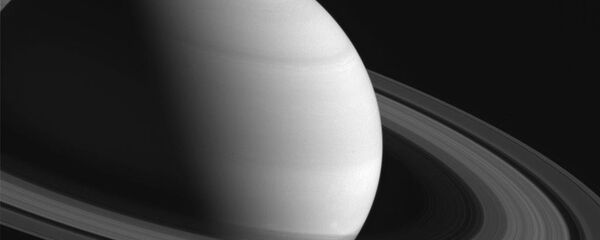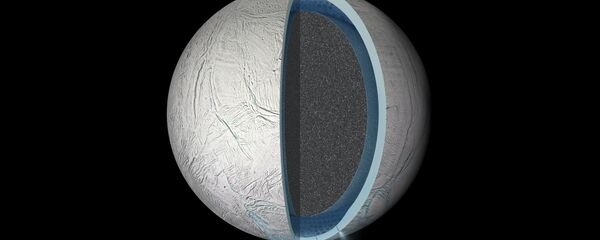Saturn's moon Titan harbors a vital ingredient for life, according a new study of samples of its atmosphere taken by NASA's Cassini spacecraft and published in the journal Science Advances.
Scientists studying the samples discovered a complex molecule in the nitrogen-rich atmosphere that is capable of forming a membrane, a part of all cells which acts as a barrier, allowing some materials in but stopping others.
On Earth, membranes are primarily made from lipids and proteins but these molecules could not survive on Titan, where the temperature is —179 degrees Celsius. The molecule on Titan that could fit the bill is called vinyl cyanide, also known as acrylonitrile.
It is made in large quantities, high in the atmosphere of Titan. On Earth, it is a colorless, highly flammable and toxic liquid that is used in the manufacture of plastics, adhesives and synthetic rubber.
Dr. Jonathan Lunine, a Physical Sciences Professor and Director of the Cornell Center for Astrophysics and Planetary Science at Cornell University, told Radio Sputnik that the discovery of vinyl cyanide adds to previous research which hypothesized that the molecule is capable of forming cells.
"Some numerical simulations that my colleagues and I did at Cornell a few years ago showed that vinyl cyanide and liquid methane had the right properties to form spheres, essentially containers the size of a virus or smaller, that not only would be stable but would be flexible as well. They therefore might have the right properties to serve as a kind of primitive proto-cell that would work in the liquid methane seas of Titan," Lunine explained.
Titan is the second largest moon in the solar system, after Jupiter's Ganymede. It is the only moon in the solar system with clouds and a dense, planet-like atmosphere. Like the air on Earth, the atmosphere is mostly nitrogen but in contrast to our planet, where the second most common gas is oxygen, the second most abundant gas is methane.
"High in Titan's atmosphere, ultraviolet light from the Sun and particle radiation from Saturn provide an energy source for manufacturing other organic molecules from the methane and the nitrogen, like vinyl cyanide. Once these are formed, they precipitate out onto the surface."

"Thanks to Cassini, we know that there are large seas of liquid methane and some other organics in the high latitudes of Titan. So, some of these materials will precipitate out into those seas and it's possible then, that additional chemistry goes on on the surface that might in some way mimic the chemistry that went on early in the history of the Earth," Lunine said.
"Although, of course, in the case of the Earth the bodies of liquid were water and are water, whereas in the case of Titan they are liquid methane and ethane. So, it's an interesting natural world-scale experiment in organic chemistry going on over very long periods of time."
If life was found in Titan, it would be very different from that on Earth. On our planet, genetic information is carried in DNA and RNA proteins, which would not even be able to form in liquid methane on the surface of Titan.
"That life would have to be biochemically completely different from life on Earth and that makes Titan a great place to test the hypothesis that chemical evolution will have many different outcomes which could be very complex, just depending on the environment that's present."
"Both of these [probes] together tell us that ocean is salty, that it has some amount of salts and minerals that's very good for the formation of life. The questionable side is that at the base of that ocean, rather than the rocky core of Titan, there may be an intervening layer of high-pressure ice."
"If that's the case, that would be a negative for the origin of life because the ocean would not have access to minerals that are thought to be important in the origin of life."
The Cassini probe, which ends its mission in September with a fiery plunge into the upper atmosphere of Saturn, won't be able to find out whether there is life at the bottom of Titan's deep ocean since the water is difficult to get samples of.
"The water oceans of Enceladus, another moon of Saturn, and Europa, the moon of Jupiter, are much closer to the surface. They are underlain by rock and they may be better places to go to look for terrestrial-like life, life like we have here on Earth," Lunine said.



